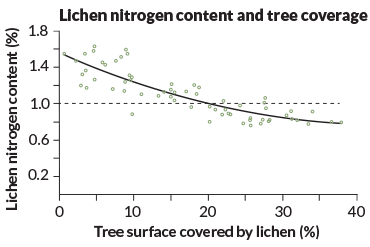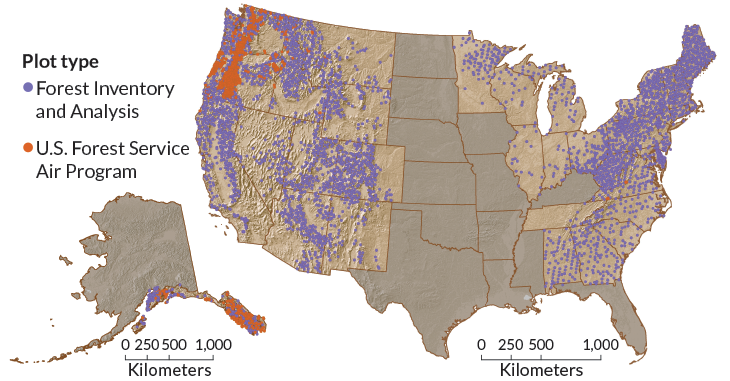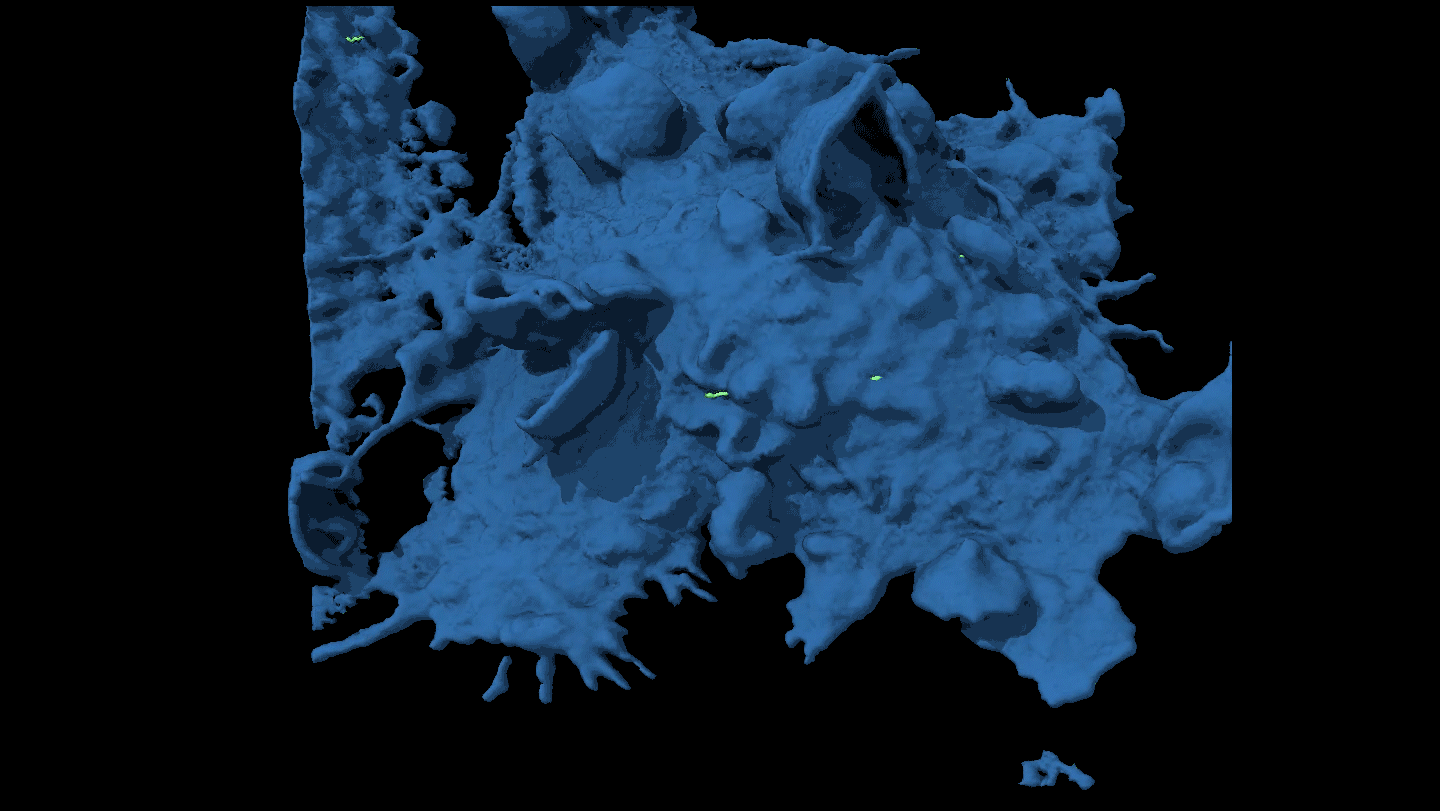Lichens are an early warning system for forest health
Scientists tap symbiotic lichens as sentinels of air quality, and now, climate problems
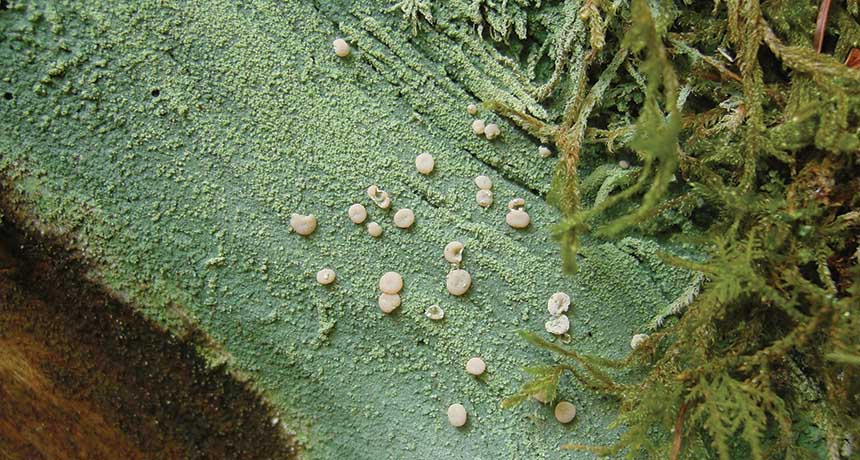
SENTINELS OF FOREST HEALTH Aptly named “fairy barf” lichen (Icmadophila ericetorum) clings to bark in the Great Smoky Mountains of Tennessee. Lichens are useful for sensing threats to ecosystems, including air pollution and climate change.
Jason Hollinger/flickr (CC BY 2.0)
Ecologist Linda Geiser works her way through thick undergrowth on the steep hills of the Bull Run Watershed just outside of Portland, Ore. Every step in her heavy boots is deliberate. It would be easy to break an ankle here, or worse. A dense sea of ferns and berry bushes hides deep pits and sharp fallen branches.
This treacherous slope is a U.S. Forest Service field site, one of many in the United States, recognizable by its bright orange flagging fluttering from the trees. Geiser has patrolled terrain like this for 30 years. As manager of the Forest Service’s air-quality program, she’s tasked with monitoring pollution. So she has come here, not to check sophisticated equipment, but to find lichens.
Fringed and fuzzy, or as slick as a coat of paint, lichens are mosaics of fungi partnered with algae or cyanobacteria that speckle tree bark and dangle from the canopy (SN: 11/7/09, p. 16). In those precarious perches, lichens absorb their food from fog, wind and rain. With no roots but very absorbent tissue, lichens are exquisitely vulnerable to gases released from burning fossil fuels and other pollutants carried by the wind and rain. That sensitivity makes lichens powerful sentinels of forest health.
“Where there is pollution, there is a predictable effect on lichens,” Geiser says. Rare and delicate lichen species that are highly specialized to their habitat are some of the first to die out as air quality falls. Less-sensitive, generalist lichens hang on longer and, in some cases, even survive and expand. Both can signal problems to come.

A 2014 study linked an abundance of the nitrogen-loving lichen Candelaria pacifica in Yosemite National Park with hot spots of excess nitrogen blown over from the sprawling farmlands of California’s Central Valley. Nitrogen becomes a pollutant at very high concentrations. A 2015 study in Washington State tied an area of heavy metal pollution, detected in lichen tissues in the Colville National Forest, to a zinc and lead smelter just across the border with Canada.
Pollution builds up inside lichen tissues in proportion to its concentration in the wider environment. Anything poisoning lichens is also accumulating more broadly in the forest. Lichens and other supersensitive species begin to shift first, but the same contaminants may hit hardier plants and animals next.
That’s why Geiser is hiking in the shadow of Mount Hood. She jots down the name and abundance of every lichen species she finds at Bull Run to track changes in the lichen census since the last survey of this plot, 10 years ago. Geiser carries a large, clear bag in her pack and fills it with a seafoam green lichen called Platismatia glauca. In a lab at the University of Minnesota, researchers will dissolve the P. glauca in acid to measure levels of 24 air pollutants. Other tests measure sulfur, nitrogen and mercury.
The Forest Service has used lichens to track air quality since the 1980s. What began as a few pilot studies has expanded into a national program, with thousands of lichen-monitoring plots across the country. The information collected at those sites is cataloged in a database, used by the Forest Service to track changes in the lichen landscape. Until now, that database has not been publicly available. But in 2017, it will be released — along with an atlas of lichen distributions nationwide — so anyone can track this early warning system.
The timing is good, because while these fungal mélanges have been counted on as air monitors for decades, they have now also begun to show their worth as sentinels of climate change in the Lower 48 states and, increasingly, in the Arctic.
Story continues after image
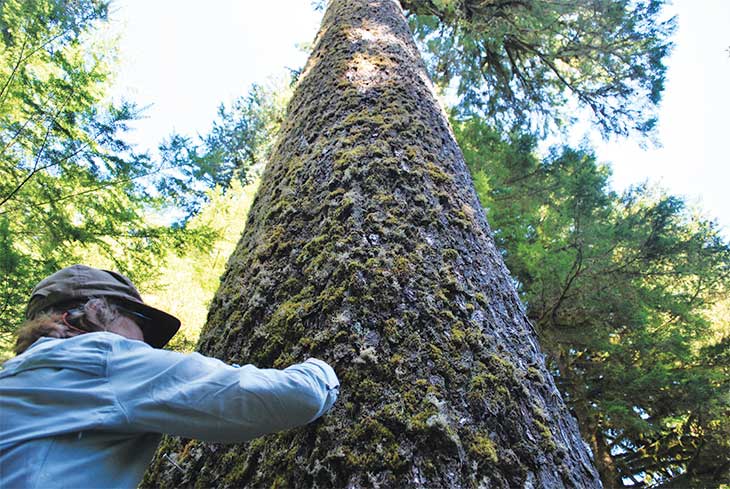
Environmental watchdogs
Far from the rain-drenched forests of the Pacific Northwest, on the gray streets of 1860s Paris, a botanist named William Nylander noticed a peculiar pattern. More lichen species grew in the oasis of the Luxembourg Garden than elsewhere in the city. The park was less polluted than the rest of Paris. Nylander inferred a connection: Better air quality meant higher lichen diversity.
Proof that lichens respond to air quality came about a century later. Studies in the 1950s found that lichen diversity fell as sulfur dioxide rose. In 1958, botanist Erik Skye found that airborne sulfur dioxide, emitted from a Swedish oil works, killed lichens surrounding the factory. The sulfur dioxide acidified the lichens’ cells, disrupting metabolism and photosynthesis. Other pollutants, like nitrogen dioxide, can also kill some lichen species by overfertilizing them. Without protective structures common in plants, such as a waxy cuticle and pores that can close to keep out unwanted substances, lichens are especially vulnerable to environmental vagaries.
By the 1980s, most large cities in Central Europe monitored lichens to track air quality, says biologist Christoph Scheidegger of the Swiss Federal Institute for Forest, Snow and Landscape Research in Birmensdorf. What’s appealing, he says, is the tight relationship between lichen diversity and pollution levels. When the number of sensitive lichen species goes down, it reveals areas where pollution levels are going up.
In the United States, lichens help the Forest Service and National Park Service set pollution targets and identify areas where those targets are being exceeded. Those agencies don’t have the authority to set pollution laws. Instead, they make recommendations to state governments and the U.S. Environmental Protection Agency on the amount of pollution an ecosystem can withstand before falling into decline.
To figure out how much pollution is too much, government scientists look to lichens, as well as alpine plants, trees, grasses and other parts of the ecosystem, says ecologist Tamara Blett of the National Park Service, which also monitors air quality. Many field studies show that lichens “start to disappear at a lower amount of air pollution than other species,” Blett says. Other organisms “aren’t affected until the pollution is higher.”
That means lichens set the high bar for pollution standards. Protect them, and everything else is safe. Once pollution thresholds are established, U.S. scientists can use lichens to identify hot spots that exceed recommended limits. It works like this: Scientists like Geiser hike into forest field sites to collect lichen tissues and survey the number and abundance of lichen species. In the lab, the tissues are analyzed for concentrations of nitrogen, sulfur and other potential pollutants. From the results, ecologists make a map that reveals “red zones,” “orange zones” and “green zones,” where pollution thresholds are met or exceeded across the landscape, Blett says.
Fluffy, green wolf lichen (Letharia vulpina) collected in 2011 along a major road in California’s Sierra Nevada had nitrogen levels exceeding recommended pollution limits. In Wyoming’s Wind River Range, an area plagued by air pollution, nitrogen concentrations were twice as high in lichens growing near natural gas drilling operations as those growing farthest away, researchers reported in 2013; concentrations decreased exponentially with distance from drilling sites.
Machines and nature
The lichens are “like teeny living instruments,” Blett says. Studying them is an order of magnitude cheaper than installing human-made air-quality monitors. Each lichen plot costs $150 to $500, says Forest Service lichenologist Sarah Jovan, who leads the lichen program with Geiser.
Measuring pollutants directly, using a human-made air-quality monitor, would cost $3,000 to $20,000 a year, Jovan says, depending on the instrument and pollutants measured. “It’s an incredible savings,” she says.
Plus, Geiser adds, lichens can provide evidence of ecological harm, while chemical and physical methods tell only what’s in the air or precipitation. “They don’t tell you if that level is harmful to living things.”
While lichens have a huge cost advantage, they also have limitations as indicators. In general, Jovan says, the content of lichen tissues today points to pollution over the last six to 12 months. They don’t offer the same time frame precision as pricier instruments.
Agencies navigate these pros and cons by using lichens in combination with other monitors. In places where the source of pollution isn’t clear, it doesn’t make sense to install expensive instruments across the landscape.
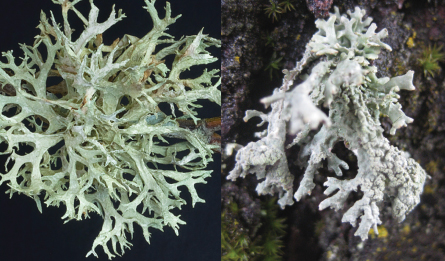
Instead, lichen studies are a first step to identify pollution hot spots, Blett and Jovan explain. Then more expensive monitors are installed at heavily polluted sites. “Using the two approaches together creates incredible efficiency,” Jovan says, “and cost savings.”
When the EPA and the Forest Service set out to track regional environmental health in the early 1990s, they called on lichenologist Bruce McCune, of Oregon State University in Corvallis. The agencies asked McCune to design pilot studies using lichens to assess air pollution. That early work grew into the same lichen census that brought Geiser to Bull Run.
The Forest Service has almost 25 years of lichen data from more than 6,000 sites nationwide. “It’s unprecedented to have this scale of information,” says Jovan, who created the atlas over the last decade. “This is the first time all of the data we’ve ever had has come together.” Federal agencies including the Forest Service, the Park Service, U.S. Geological Survey and the Bureau of Land Management are all interested in lichens as environmental sentinels, she says. “Now all of a sudden, everyone and their mom wants to use lichens.”
When these data are released publicly in 2017, she says, they will set a baseline for lichen distributions nationwide. In 10 years, or in 50, scientists will be able to track large-scale changes over time.
Story continues after map
Climate ups and downs
Climate change caused by greenhouse gas emissions presents its own kind of air-quality problem. And lichens may help keep an eye out for climate changes, too.
Small differences in temperature and moisture mean big changes in the number and diversity of lichens in the landscape. Lichen diversity in Sweden and Alaska dropped with rising temperature, and lichens were more sensitive to change than vascular plants, according to a study published in 2012.
Earlier work in western Europe found that drought-tolerant lichens become more common in response to warming, while acid-loving species decline. In the Netherlands, Hyperphyscia adglutinata increased in abundance substantially from 1995 to 2001. During the same period, Lecanora conizaeoides declined by more than 60 percent.
By tracking which species increase or decrease with changing temperature and rainfall, ecologists are learning to read the climate story lichens are telling. The idea, Geiser says, is to use lichens to understand the on-the-ground realities of climate change.
The value of the lichens data trove will only increase with time, McCune says. Today, decades of lichen data offer a national snapshot that “contains priceless information on air quality and a basis for comparison in the future,” he says. “Can you imagine 50 years from now,” when “we’ve got thousands of plots in the U.S. with data from way back in 2000 or something like that? It’s going to be fantastic to see the difference between 2050 and 2000.”
In the meantime, the lichens of the Northwest that Geiser walks among will keep growing and changing in step with the changing planet. They’ll breathe in the mountain air and soak up water as it drips down the trees. These and other lichens will stand as a beacon of what’s to come.
Photos from the field
In August, Science News intern Amy McDermott traveled to Bull Run Watershed near Portland, Ore., to collect and survey lichen with U.S. Forest Service air program manager Linda Geiser. The two spent several days hiking through steep, forested slopes while chatting about the history and science of lichen monitoring within the agency. “Linda is a much faster hiker than I am,” McDermott says, “and she makes excellent campfire dinners. Experiencing life in the field added a new layer of depth and excitement to science reporting.” Here are some snapshots from McDermott’s trip:
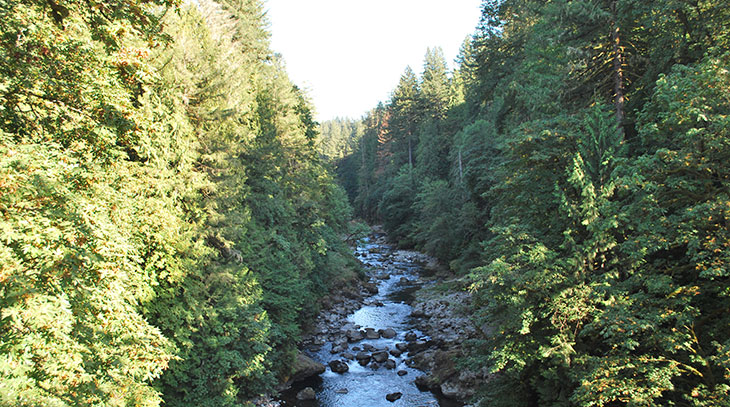
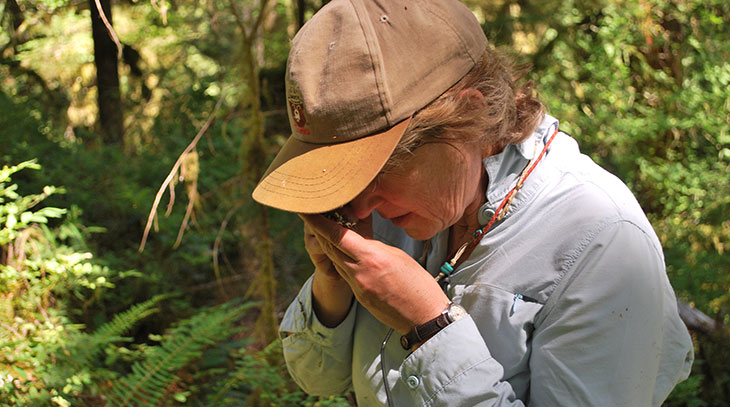
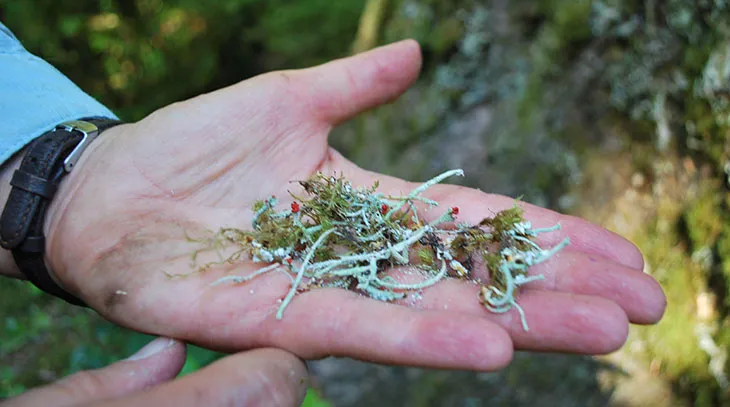
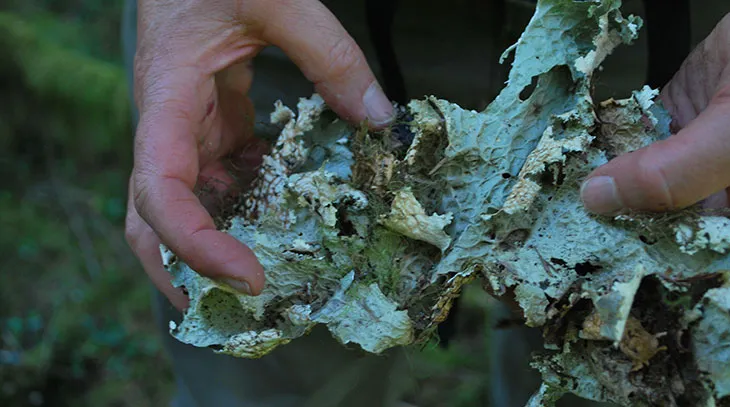
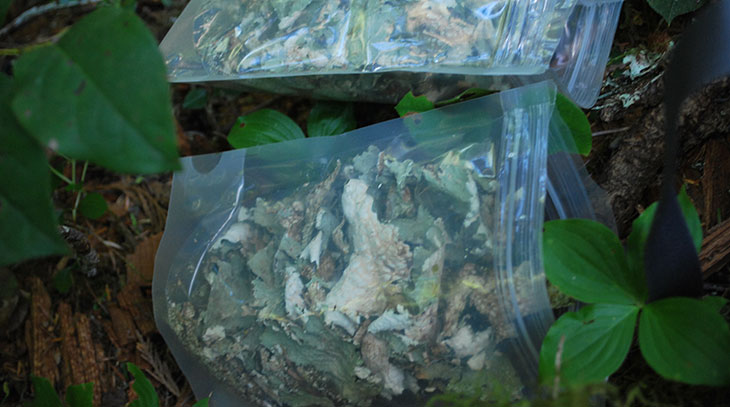
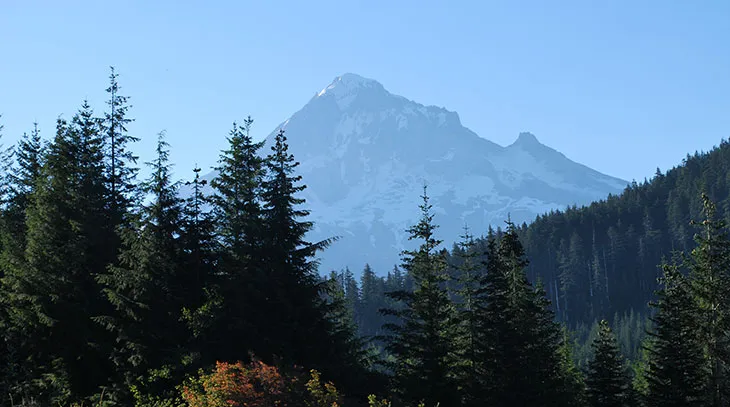
This article appears in the November 26, 2016, issue of Science News with the headline, “Sentinels of forest health.”
Amy McDermott is a former Science News intern. Her field reporting for this story was supported by a grant from the Council for the Advancement of Science Writing.
